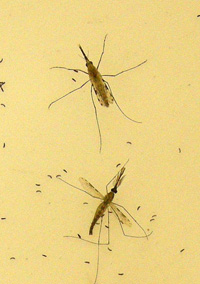Malaria: the facts
03 September 2012
Malaria is caused by a parasite called Plasmodium, which is transmitted via the bites of infected Anopheles mosquitoes, called 'malaria vectors', which bite mainly between dusk and dawn. According to the World Health Organisation (WHO), the parasites multiply in the liver, and then infect red blood cells.
Symptoms of malaria include fever, headache, and vomiting, and usually appear between 10 and 15 days after the mosquito bite. If not treated, malaria can quickly become life-threatening, by disrupting the blood supply to vital organs. In many parts of the world, the parasites have developed resistance to a number of malaria medicines.
Key interventions to control malaria include prompt and effective treatment with artemisinin-based combination therapies, the use of insecticidal nets by people at risk, and indoor residual spraying with insecticide to control the vector mosquitoes.
Key facts
- According to the World Malaria Report 2011, there were about 216 million cases of malaria and an estimated 655 000 deaths in 2010, mostly among African children.
- Malaria is preventable and curable.
- Increased malaria prevention and control measures are dramatically reducing the malaria burden in many places.
- Non-immune travellers from malaria-free areas are very vulnerable to the disease when they get infected.
- Malaria mortality rates have fallen by more than 25% globally since 2000, and by 33% in the WHO African Region.
- Most deaths occur among children living in Africa, where a child dies every minute from malaria.
 This work is licensed under a Creative Commons Attribution-NoDerivatives 4.0 International License.
This work is licensed under a Creative Commons Attribution-NoDerivatives 4.0 International License.
Please view the republishing articles page for more information.










